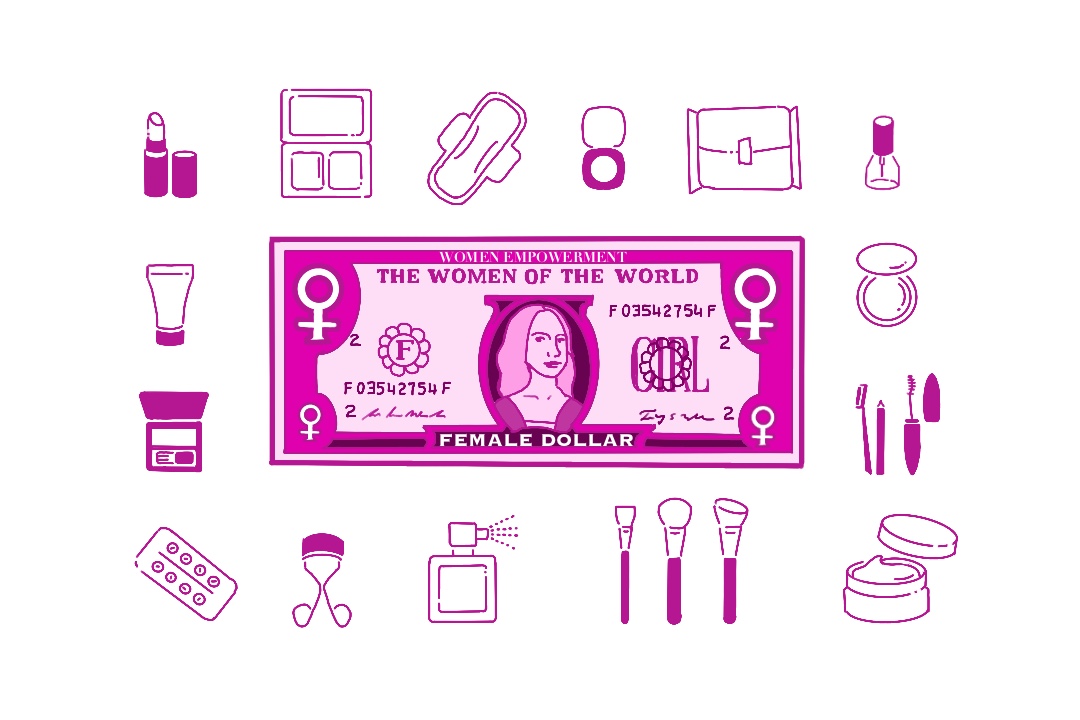Picture going to the pharmacy for a usual grocery trip to pick up some shaving cream and encountering two products from the same brand, where the only visible difference is their colour. One is pink, costing $2.49, while the other is blue, costing $1.69.
When I encountered this, I justified it unconsciously, thinking it wasn’t common and it was a reasonable action for companies to price identical products differently. However, this pricing difference is known as the pink tax, and it’s a widely occurring phenomenon that encourages — and sometimes forces — women to pay more for many generally used products.
What is the pink tax?
The pink tax is not an actual tax, but a gender-discriminatory yet legal pricing practice. Decades of gender-based colour coding has ingrained a distinction between pink products for women and blue products for men. This discriminatory marketing campaign has induced the pink tax and many other sorts of pricing biases.
From a study reported by the New York City Department of Consumers Affairs, across the 35 product categories that they surveyed, women paid higher prices 42 per cent of the time, while men paid higher prices 18 per cent of the time. Furthermore, the study showed that when it comes to children’s clothing, girls’ clothes cost four per cent more than boys’ clothes on average, and the pricing gap for toys and accessories can be up to seven per cent.
Along with the higher price, women only make 83 cents on each dollar that a man earns in the same position. Women face the ironic situation of earning less but paying more. Therefore, their purchasing power is weakened in the economic market.
The pink tax in Canada
Research from Parsehub in 2016 showed that women pay an average of 43 per cent more on hygiene products compared to men. However, the pattern has worsened over the last five years. In 2021, Parsehub found that women in Canada now pay over 50 per cent more on unisex hygiene products than men.
Ontario attempted to introduce a bill to stop gender-based price discrimination back in 2005. It aimed to prohibit discriminatory pricing practices since it is against the Human Rights Code. However, the bill was eventually referred to the standing committee and no further action has been documented.
Can we do anything about this?
The short answer is yes. In 2016, a bill called “The Pink Tax Repeal Act” was introduced in the United States, calling to outlaw the pink tax on both consumer goods and services. Although it failed to go through Congress, the act put the pink tax under the legislative spotlight and spread awareness about it. The state of New York placed a ban on the pink tax in 2020 by requiring the providers to present price standards and lists.
Furthermore, marketers can work with legislators and educate consumers on relevant matters. For instance, in 2018, the European Wax Center launched a campaign named “AxThePinkTax” to draw attention to it and bring awareness to citizens.
On the individual level, we can support companies who use gender-neutral pricing and stay aware of potential pricing gaps when we shop for products like razors and shaving cream. Currently, there is no ongoing action against the pink tax.
With the pandemic, womens’ unemployment rate skyrocketed to 12.8 per cent between February and April 2020, while mens’ unemployment rate rose to only 9.9 per cent. This has further impacted women’s purchasing power within the economy. As the pandemic and lockdown measures persist, the pink tax issue is more urgent than ever.


